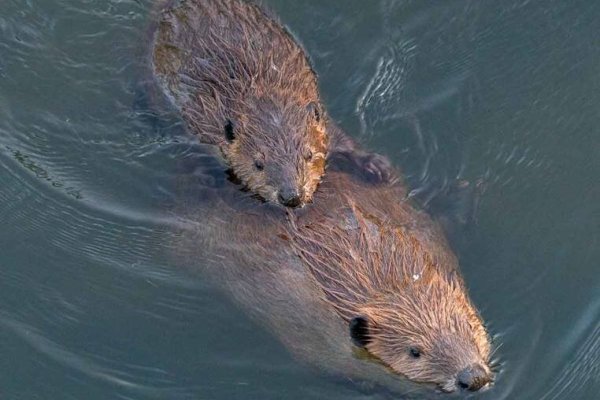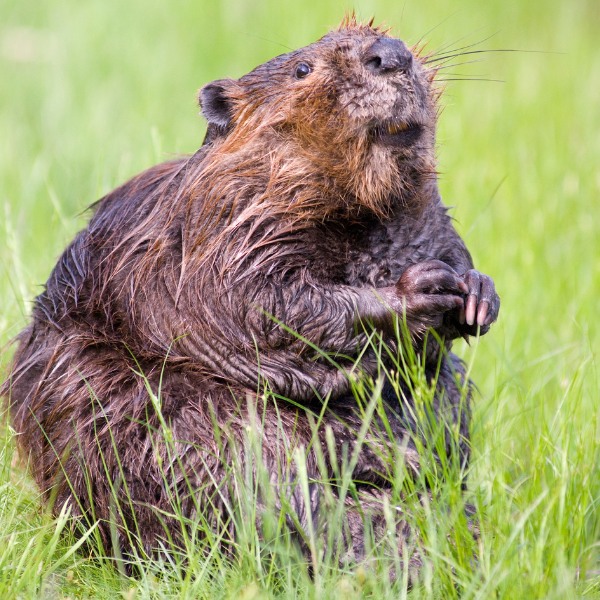
Meet Nature’s Wetland Engineers
Beaver, the second-largest rodents in the world, are wetland engineers who physically modify the environment more than any other non-human organism in the Northern Hemisphere. The North American beaver (Castor canadensis) is believed to have historically occupied the vast majority of watersheds across California, although their populations were decimated from the 1700s to the early 1900s, which significantly altered watershed function throughout the state.
Learn more about beaver benefits, biology, and history below.
All About Beaver
Size & Lifespan
- As adults, these mammals weigh 40–80 pounds and live an average of 12 years in the wild.
Family Structure
- Beaver live in tight-knit groups called colonies composed of one mating pair, the young of the year (kits), yearlings, and sub-adults.
- Beaver have just one litter of kits a year. Litters can range from one to nine kits.
- By age two or three, sub-adults disperse to find habitat and establish new colonies, traveling on average 30 miles by water or 12 miles overland.
Diet & Habitat
- Beaver are herbivores.
- They eat a wide range of foods, from the inner bark of deciduous trees to herbaceous matter such as grasses, leaves, bulbs, and rhizomes.
- Beaver front teeth (incisors) continue to grow throughout their lives and will outgrow their skull if not kept sharp by chewing on wood regularly.
- Beaver need aquatic habitat to protect themselves from predators, including mountain lion, wolf, coyote, bobcat, bear, river otter, and human trappers.
- Beaver colonize existing ponds, lakes, streams, and rivers and dig out burrows in banks or build mud-plastered wood lodges above the water line.
- Beavers are highly adaptable. There is no known genetic difference between those who build lodges and those who build dams. Site conditions determine the strategy.
Range
- The North American beaver (Castor canadensis) has a range that runs from the taiga in northern Canada to the deserts of northern Mexico, including California.
- Scientists estimate that there were between 60 and 400 million beaver on the North American continent prior to European colonization. Millions of beaver dams and ponds covered more than 300,000 square miles in pre-Columbian America. A tenth of the total land area was wetland.
- There has been confusion about where beaver historically lived in California. Many still refer to analyses conducted in the 1940s that assert beaver were only native to the Central Valley and the basins of the Klamath and Colorado Rivers.
- The WATER Institute joined efforts with a group of beaver advocates to re-evaluate the historical records and publish peer-reviewed papers summarizing the physical, historical, and ethnographic evidence they found. This evidence suggests that beaver historically ranged across much of the state.
- Physical evidence included buried beaver dams in the Sierra Nevada (carbon dated to 530 A.D.) and buried beaver bones in the San Francisco Bay Area and the North Coast of California. Beaver were found across the state, including in the Sierra Nevada mountains and as far south as San Diego County, according to historical accounts from explorers, sea captains, and trappers arriving in the state—first by boat and later on foot.
- Ethnographic evidence includes a word for “beaver” in 60 Native California languages, beaver stories, beaver parts used for ceremonial objects, their bones found in middens, and their distinct image portrayed in the pictographs of Native California tribes.

Help us improve our understanding of beaver distribution across California by reporting your observation. Your input supports statewide conservation, coexistence strategies, and watershed restoration efforts.

